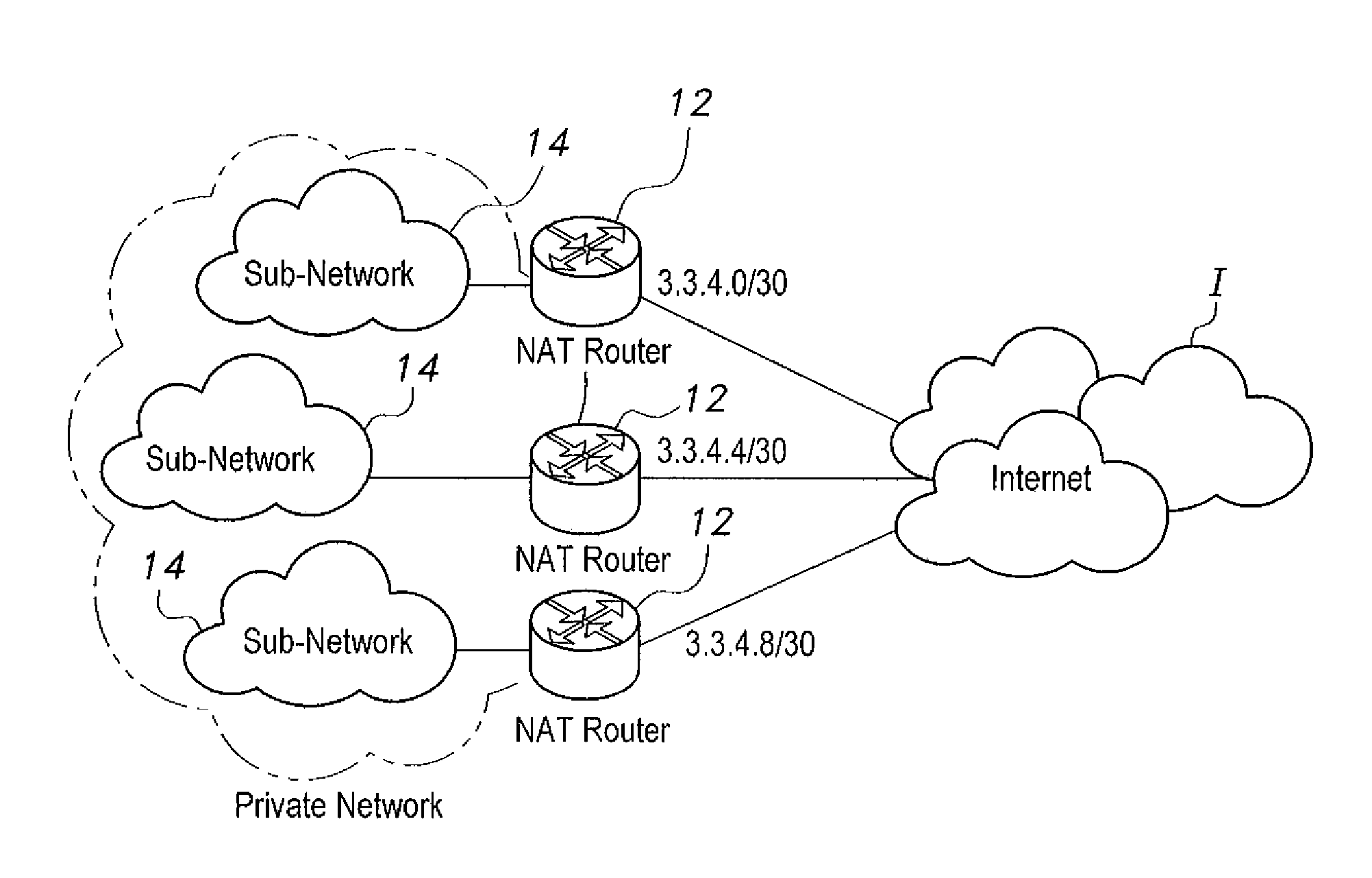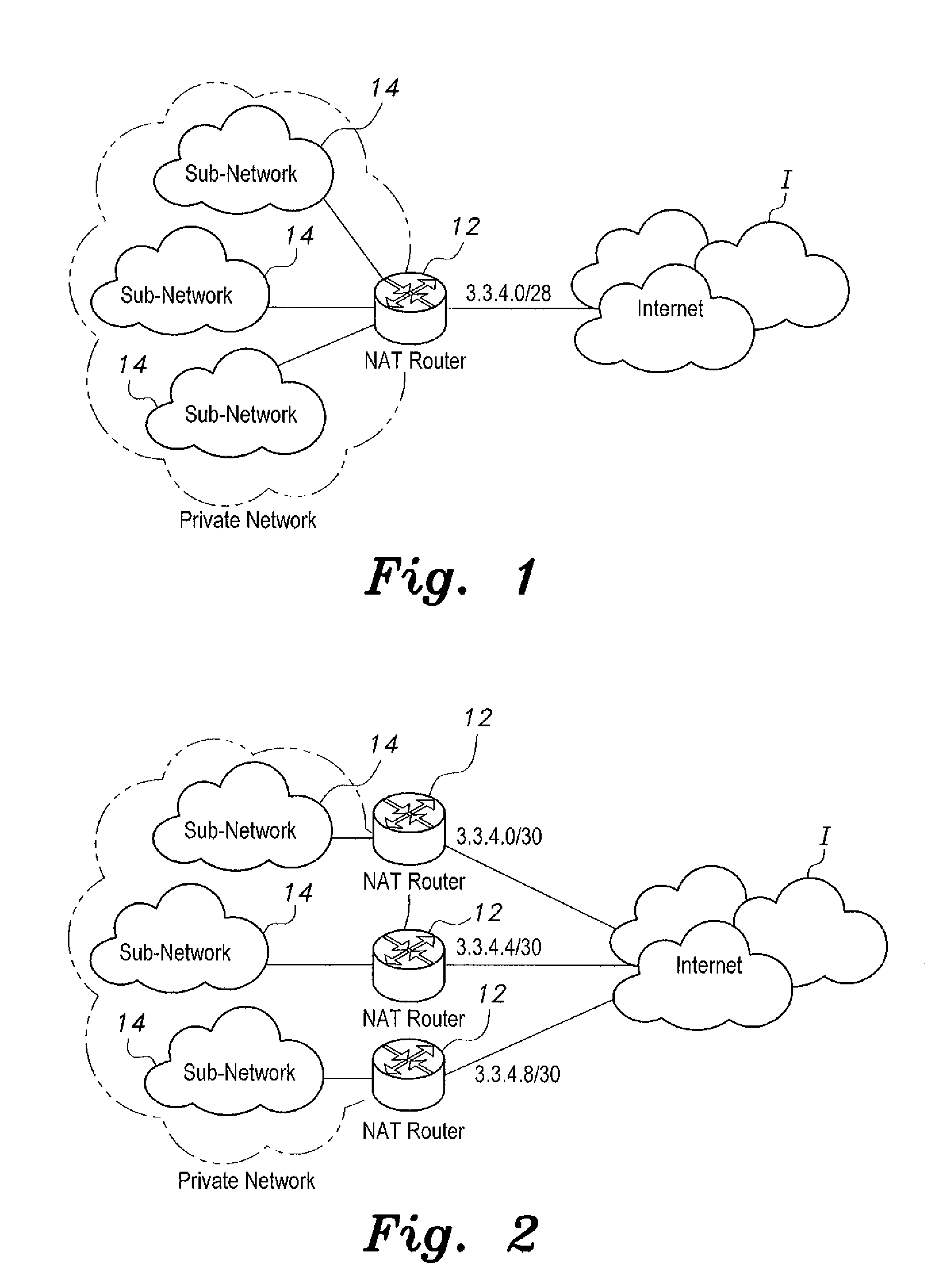Network address translation-based method of bypassing internet access denial
a network address and denial of internet access technology, applied in the field of computer network protocols, can solve the problems of many security weaknesses of bgp, inability to control the route of traffic through autonomous systems, and no way to ensure the traffic, so as to prevent addressing conflicts
- Summary
- Abstract
- Description
- Claims
- Application Information
AI Technical Summary
Benefits of technology
Problems solved by technology
Method used
Image
Examples
Embodiment Construction
[0058]The present invention is directed towards a network address translation (NAT)-based method of bypassing Internet access denial in which NAT is used as an identity-hiding technique to bypass Internet access denial. The victim network uses NAT routers as a gateway to connect to neighboring networks, and uses a set of non-blocked Internet protocol (IP) addresses as the NAT routers' external public IP addresses. These addresses are not part of the IP ranges registered to the victim network. Rather, they are obtained from a neighboring network. The outgoing packets, therefore, will not be blocked by the malicious ISP, as they will not be recognized as part of the victim network.
[0059]Implementing the NAT-based method requires setting the gateway routers to use NAT to translate all traffic into the non-blocked public IP addresses. Once NAT is enabled and configured properly, clients within the victim network can send requests and receive responses. Even if traffic passes through the...
PUM
 Login to View More
Login to View More Abstract
Description
Claims
Application Information
 Login to View More
Login to View More - R&D
- Intellectual Property
- Life Sciences
- Materials
- Tech Scout
- Unparalleled Data Quality
- Higher Quality Content
- 60% Fewer Hallucinations
Browse by: Latest US Patents, China's latest patents, Technical Efficacy Thesaurus, Application Domain, Technology Topic, Popular Technical Reports.
© 2025 PatSnap. All rights reserved.Legal|Privacy policy|Modern Slavery Act Transparency Statement|Sitemap|About US| Contact US: help@patsnap.com



